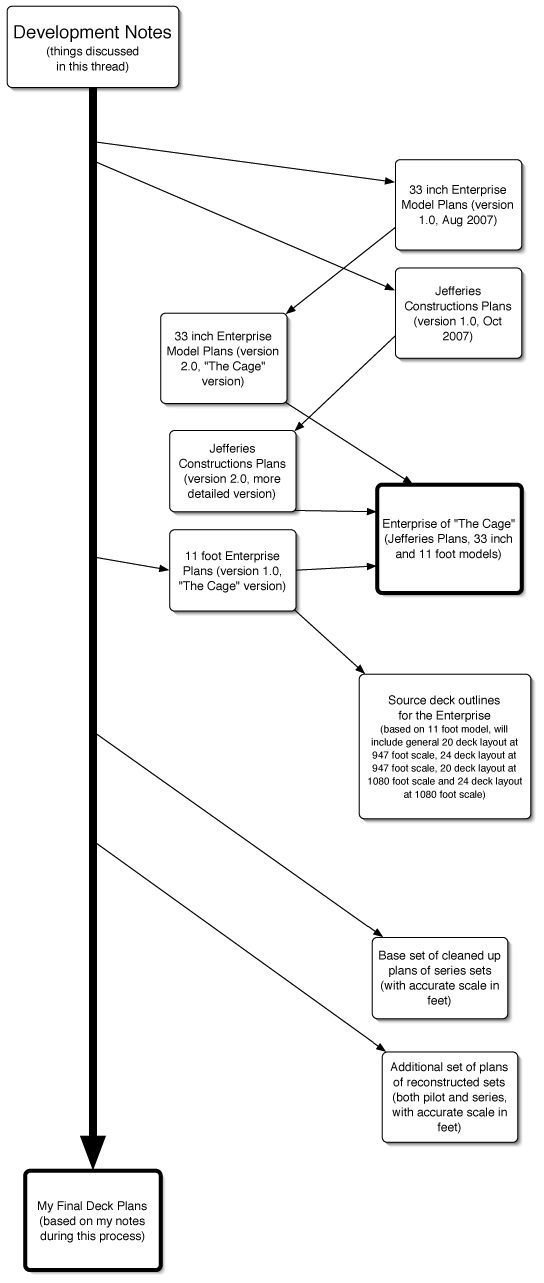Captain Robert April,
Generally hydrogen fusion is generally best performed with deuterium and tritium.
CuttingEdge100
I work with the Treknology that I see established, and Federation starships utilize deuterium slush as a primary component. What they do with it after it thaws is someone else's problem.
Actually, the idea that FUSION is best performed with deuterium and tritium is highly debatable.
What is hydrogen? It's a single proton with a single electron orbiting it.
What's deuterium? It's an isotope of hydrogen... instead of the nucleus being a single proton, it's now a proton with a neutron present as well.
What's tritium? It's another isotope of hydrogen... instead of the nucleus being a single proton, it's now a proton with TWO neutrons present.
The prefixes "deu" and "tri" which are part of the nomenclature, here, refer to the atomic weight. Electrons are nearly massless compared to neutrons and protons, both of which have nearly the same mass. So, "deuterium" is twice as massive, per mole of material, as "regular" hydrogen is, and "tritium" is three times as massive, per mole, as "regular" hydrogen.
What happens when you fuse two hydrogens to form a single helium? (That's called "fusion.") You strip away the electrons (high temperature and a strong magnetic field), and attempt to collide the remaining nuclei.
Collide them with sufficient energy behind the collision, and you permanently bond the two nuclei into a single nucleus, releasing energy in the process.
The advantage of having deuterium or tritium is the increase in nucleus mass... meaning that there's more energy which can be stored in any nucleus at a given temperature (meaning a higher instantaneous velocity and thus higher momentum, really, at impact-time).
But there are also issues against that. Basically, you end up SHEDDING those neutrons (or at least a portion of them), and that's "neutron radiation," which is very difficult to shield against (since it can't be deflected or absorbed by an electromagnetic field) and thus requires VERY THICK plating of some ultra-dense material to protect against (say, several feet of lead).
Now, if you go with "regular" hydrogen, you require a much higher reaction temperature (roughly three times the absolute temperature), but you have an entirely clean reaction... no neutrons are shed, and all energy output is in the form of electromagnetic energy (light, basically).
So... while working with deuterium or tritium may be "easier," I'd argue, strongly, that it's not really PREFERABLE.
Make sense?
EDIT: Now, for FISSION... where you are splitting atoms... you NEED the "neutron bullets" released in every fission reaction (splitting of a nucleus). These neutrons are what strike adjacent nuclei and split them. A sufficiently dense field of neutron "bullets" (which are always being released due to natural decay) can result in the decay rate increasing, and eventually you have "critical mass" (enough decaying material in a small enough volume) that you have enough "neutron bullets" to cause the reaction rate to increase... which releases more "neutron bullets" which increases the rate even more... and more... over and over... this is called a "chain reaction" and is how fission bombs (or "atom bombs") work.
And we use "atom bombs" to create sufficiently high temperatures to cause hydrogen to fuse... in other words, the detonator for a "hydrogen bomb" is an "atom bomb."




